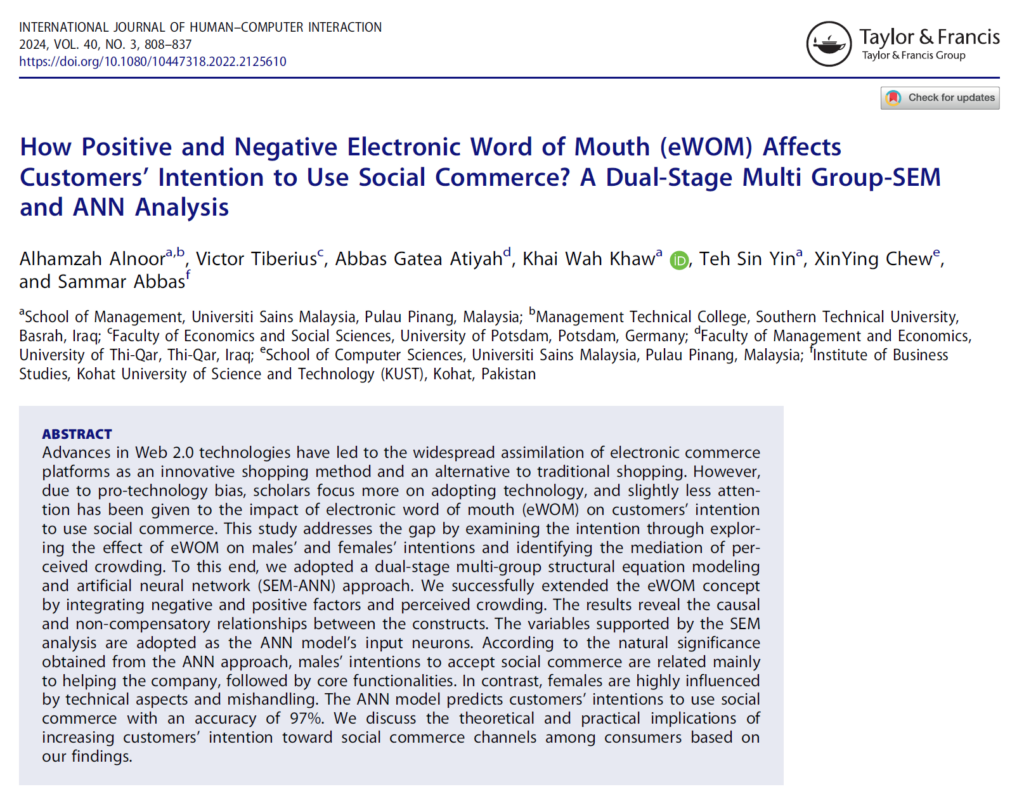University|01-31-2024
Electronic word of mouth and social media usage
Abstract:
Advances in Web 2.0 technologies have led to the widespread assimilation of electronic commerce platforms as an innovative shopping method and an alternative to traditional shopping. However, due to pro-technology bias, scholars focus more on adopting technology, and slightly less attention has been given to the impact of electronic word of mouth (eWOM) on customers’ intention to use social commerce. This study addresses the gap by examining the intention through exploring the effect of eWOM on males’ and females’ intentions and identifying the mediation of perceived crowding. To this end, we adopted a dual-stage multi-group structural equation modeling and artificial neural network (SEM-ANN) approach. We successfully extended the eWOM concept by integrating negative and positive factors and perceived crowding. The results reveal the causal and non-compensatory relationships between the constructs. The variables supported by the SEM analysis are adopted as the ANN model’s input neurons. According to the natural significance obtained from the ANN approach, males’ intentions to accept social commerce are related mainly to helping the company, followed by core functionalities. In contrast, females are highly influenced by technical aspects and mishandling. The ANN model predicts customers’ intentions to use social commerce with an accuracy of 97%. We discuss the theoretical and practical implications of increasing customers’ intention toward social commerce channels among consumers based on our findings.
Reference:
Alnoor, A., Tiberius, V., Atiyah, A. G., Khaw, K. W., Yin, T. S., Chew, X. & Abbas, S. (2022). How positive and negative electronic word of mouth (eWOM) affects customers’ intention to use social commerce? A dual-stage multi group-SEM and ANN analysis. International Journal of Human-Computer Interaction, 40(3), 808-837, doi:0.1080/10447318.2022.2125610.




